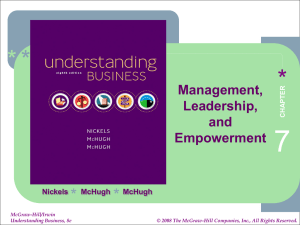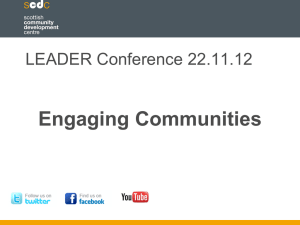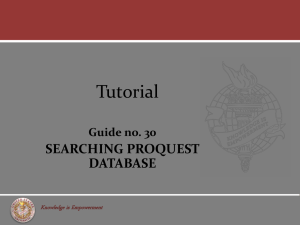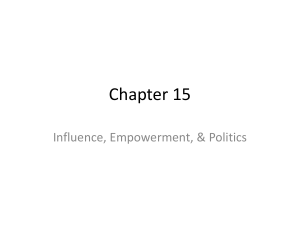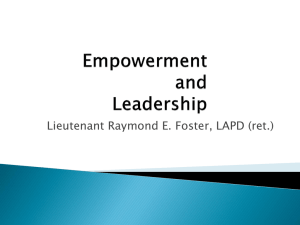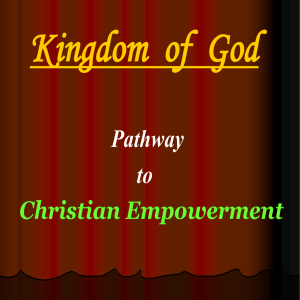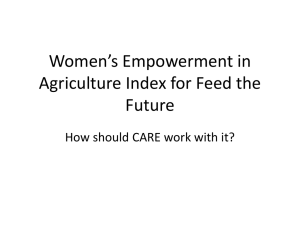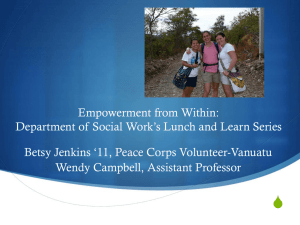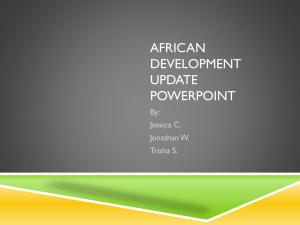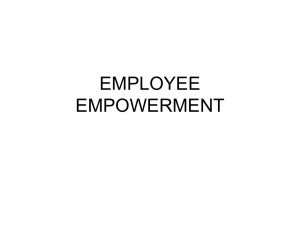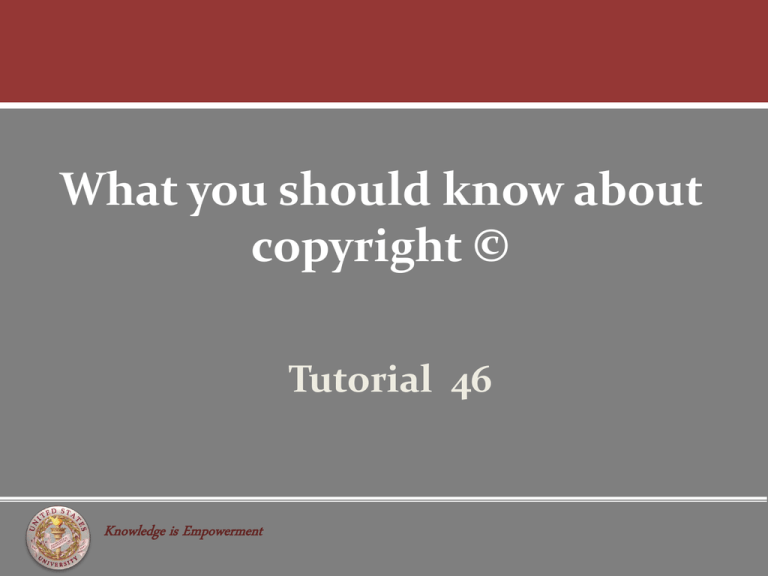
What you should know about
copyright ©
Tutorial 46
Knowledge is Empowerment
The Constitutional Provision Respecting
Copyright
• The Congress shall have Power ... To
promote the Progress of Science and
useful Arts, by securing for limited Times
to Authors and Inventors the exclusive
Right to their respective Writings and
Discoveries.
• United States Constitution, Article I, Section 8
From Copyright Law of the United States of America . Circ. 92
http://www.copyright.gov/title17/92preface.html
Knowledge is Empowerment
Today’s objective is to learn the basics
of Copyright.
“Copyright is a form of protection grounded in the U.S. Constitution
and granted by law for original works of authorship fixed in a tangible
medium of expression. Copyright covers both published and
unpublished works” ¹.
Copyright, a form of intellectual property law, protects original works
of authorship including literary, dramatic, musical, and artistic works,
such as poetry, novels, movies, songs, computer software, and
architecture. Copyright does not protect facts, ideas, systems, or
methods of operation, although it may protect the way these things are
expressed.
1. From “Copyright in General” by U.S. Copyright (2006),
http://www.copyright.gov/help/faq/faq-general.html
Knowledge is Empowerment
Sources
• Most of the information is from:
– United States Copyright Office
http://www.copyright.gov/
• Circ. 1 . Copyright Basics
http://www.copyright.gov/circs/circ01.pdf
• Copyright Law of the United States of
America http://www.copyright.gov/title17/
Knowledge is Empowerment
Important Links
• U.S. Code of Federal Regulations. Title 37- Patents, Trademarks, and
Copyrights
– http://www.copyright.gov/title37/
• U. S. Copyright Office Forms: Registration
– http://www.copyright.gov/forms/
• WIPO Lex (World Intellectual Property Organization
http://www.wipo.int/wipolex/en/
– The EU Single Market: Copyright and Neighbouring Rights
http://ec.europa.eu/internal_market/copyright/index_en.htm
• Copyright Term and the Public Domain in the United States 1 January
2012 (Peter Hirtle, Cornell)
– http://copyright.cornell.edu/resources/publicdomain.cfm
Knowledge is Empowerment
How to identify the copyright?
•
•
•
•
•
The symbol © (the letter C in a circle)
The word “Copyright”
The abbreviation “Copr”; and
The year of publication of the work
The name of the owner of copyright in the work, or
abbreviation by which the name can be
recognized.
– Example: © 2012 United States University
Knowledge is Empowerment
If you are in the internet, look for
the symbol ©
• After you open the home page site, scroll
down to the bottom of the page and click, see
the example:
• From http://www.ala.org/ Select Copyright Statement
• © Copyright 1997-2011 American Library Association.
The American Library Association is providing information and services on the web in furtherance of
its non-profit and tax-exempt status. Permission to use, copy and distribute documents delivered
from this web site and related graphics is hereby granted for private, non-commercial and education
purposes only, provided that the above copyright notice appears with the following notice: this
document may be reprinted and distributed for non-commercial and educational purposes only, and
not for resale. No resale use may be made of material on this web site at any time. All other rights
reserved…
Knowledge is Empowerment
Form of copyright for Phonorecords
of Soundrecordings
• The symbol P, π, (the letter P in a circle)
• The year of the first publication of the sound
recording
• The name of the owner of copyright in the
sound recording, or an abbreviation by
which the name can be recognized.
– Example
π 2012 A.B.C. Records Inc.
Knowledge is Empowerment
Copyright Term and the Public
Domain in the United States
• All works published in the United
States before January 1, 1923, are in
public domain.
• U.S. Copyrights. Duration of Copyrights. Circ. 15.
– http://www.copyright.gov/circs/circ15a.pdf
• In 2019 will expire works published in 1923,
in 2020 will expire 1924, and so on.
• Before of after 1978, see next table
Knowledge is Empowerment
HOW LONG COPYRIGHT
PROTECTION ENDURES
•
•
•
Data from http://www.copyright.gov/circs/circ1.pdf (p.5-6)
Duration of Copyright http://www.copyright.gov/title17/92chap3.html
http://www.copyright.gov/circs/circ15a.pdf
Knowledge is Empowerment
How much of someone else's work can I use
without getting permission?
• Under the fair use doctrine of the U.S. copyright statute, it
is permissible to use limited portions of a work including
quotes, for purposes such as commentary, criticism, news
reporting, and scholarly reports. There are no legal rules
permitting the use of a specific number of words, a certain
number of musical notes, or percentage of a work. Whether
a particular use qualifies as fair use depends on all the
circumstances. See FL 102, Fair Use, and Circular 21,
Reproductions of Copyrighted Works by Educators and
Librarians.
• Source http://www.copyright.gov/help/faq/faq-fairuse.html#howmuch
Knowledge is Empowerment
•
•
•
•
•
Section 107 also sets out four factors to be
considered in determining whether or not a
particular use is fair.
(1) the purpose and character of the use, including
whether such use is of a commercial nature or is
for nonprofit educational purposes;
(2) the nature of the copyrighted work;
(3) the amount and substantiality of the portion
used in relation to the copyrighted work as a
whole; and
(4) the effect of the use upon the potential market
for or value of the copyrighted work.
From Fair Use http://www.copyright.gov/fls/fl102.html
Knowledge is Empowerment
Examples of fair use from: The 1961 Report of the Register of
Copyrights on the General Revision of the U.S. Copyright
Law http://www.copyright.gov/fls/fl102.html
• quotation of excerpts in a review or criticism
for purposes of illustration or comment;
• quotation of short passages in a scholarly or
technical work, for illustration or clarification
of the author’s observations
• summary of an address or article, with brief
quotations, in a news report
Knowledge is Empowerment
Examples of activities that courts
have regarded as fair use
• use in a parody of some of the content of the
work parodied;
• reproduction by a library of a portion of a
work to replace part of a damaged copy
• reproduction by a teacher or student of a
small part of a work to illustrate a lesson;
Knowledge is Empowerment
Example of image footnote
from Elsevier journal
• “Reprinted from Clinical Biomechanics, 24
/10, Joaquin A. Barrios, Jill S. Higginson,
Todd D. Royer, Irene S. Davis, Static and
dynamic correlates of the knee adduction
moment in healthy knees ranging from
normal to varus-aligned. /850-4, Copyright
(2009), with permission from Elsevier .”
http://www.sciencedirect.com/science/journal/02680033
Knowledge is Empowerment
Are you publishing in the web or in
a journal, book, newspaper, etc?
• Review all your sources ©
• Read the Copyright Statement
• If you are not sure, request permission
depending of the source:
• Journal or book---write to the publisher
• Web page---write to the author or
institution
Knowledge is Empowerment
APA
th
6
ed. Copyright permission
footnote- Journal
• From [or the data in column 1 are from]
“Title of Article”, by A.N. Author and
C.O. Author, year, Title of Journal,
Volume, p. xx. Copyright [year] by the
Name of Copyright Holder. Reprinted
[or adapted] with permission.
Knowledge is Empowerment
th
6
APA
ed. Copyright
permission footnote- Book
• From [or The data in column 1 are from]
Title of Book (p. xxx), by A.N. Author
and C.O. Author, year, Place of
Publication: Publisher. Copyright [year]
by the Name of Copyright Holder.
Reprinted [or adapted] with permission.
Knowledge is Empowerment
To cite APA
th
6
ed. go to
• http://usuniversity.edu/
• Tutorials
• US University Guide to APA Style emphasis in
electronic sources and if you need more
information to cite tables, figures, etc., go to
APA Style http://www.apastyle.org/ or OWL
Purdue Online Writing Lab
• http://owl.english.purdue.edu/owl/
Knowledge is Empowerment
For more information
• Please contact
• M.L.S Catalina Lopez
• clopez@usuniversity.edu
• (619) 477 6310 Ext 2017
Knowledge is Empowerment


